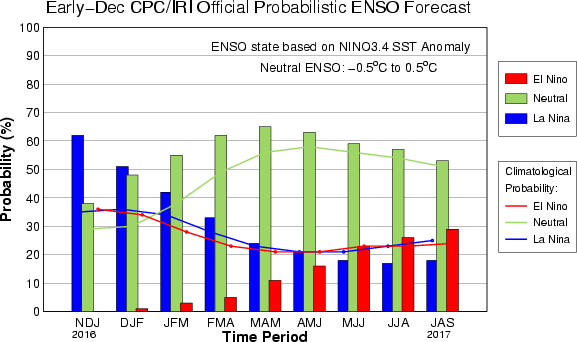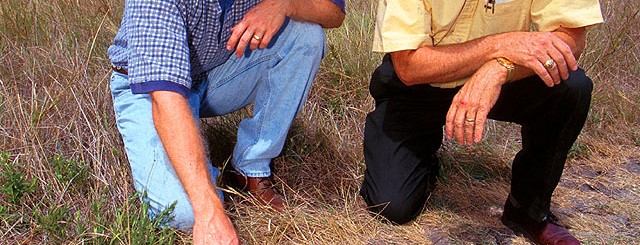January 2017
-

USA Today reported earlier this week that in all 2016 had only 17 tornado deaths during the year. This is the lowest in 30 years and the second lowest since accurate records began in 1950. The lowest year was 1986 with 16 deaths. One of the reasons this year was so low was that there…
-

Those of us who watch the tropics for signs of El Niño or La Niña have noted that the recent weak La Niña seems to be dissipating pretty quickly. What will come next? Some of the models that have just come out are predicting a return to El Niño, and this set social media abuzz.…
-

Back in 2016 the weather station at Mount Mitchell in North Carolina reported that they had received 41 inches of snow in a single 24-hour period. If that had been correct, it would have been a new record for the state. But a committee of state weather experts examined the observation and determined that it…
-

A new map based on research recently published in Geophysical Research Letters shows that most of the northern US is increasing in susceptibility to flooding based on trends in water tables. In the South and Southeast, recent droughts have lowered water tables and stream flows, reducing their likelihood of flooding. You can read more about…
-

As temperatures get warmer, scientists expect that there may be impacts on soil health. To look at that, some Australian scientists tried to determine how warmer temperatures would affect soil carbon, a measure of oil health. They looked at 12 different model simulations and found that while most of them predicted a decrease in soil…
-

The National Centers for Environmental Information produced a summary of all of the billion dollar weather disasters that have affected the US in 2016, including Hurricane Matthew and the forest fires in the Southeast this year. You can read about all of the other disasters that happened this year at https://www.ncdc.noaa.gov/billions/.
-

USA Today reported earlier this week that a new study of 500-year-old clams published in Nature Communications shows that the oceans are experiencing changes in ocean chemistry that have not occurred in the last 1000 years. The clam shells have growth rings similar to tree rings that can be related to climate conditions in specific…